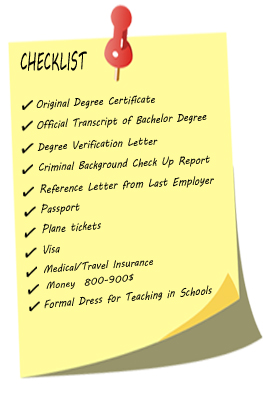HISTORY OF THAILAND
History of Thailand - Information for TEFL Teachers Thailand
The foundation of the Thai nation can be dated back to the 13th Century. Previously known as Siam until 1939, Thailand has been populated ever since the dawn of civilization in Asia. Amidst conflicting opinions of the origins of the Thais, their pre-historic settlement can be associated to the major archaeological site of Ban Chiang. There, excavation has revealed possibilities of the Thais being originated in Thailand itself and later scattered to various parts of Asia, including China.
From 9th to 11th century, the central and western area of Thailand was under the influence of the Mon civilization called Dvaravati with its Indian cultural traits. By 11th to 12th century the Khmer cultural impact was pervading the form of language, art and religion. In the Khmer Empire at Sukhothai, Sanskrit made its entry in the vocabulary as stone sculpture and architectures were randomly constructed.
The northern state of Lanna coexisted with Sukhothai and survived longer. In 1259, its first king Mengrai ascended the throne extending the borders of the kingdom from Laos to Lamphum. He also laid the foundation of the capital of Chiang Mai.
Siam was ruled by the Khmers during the 11th and 12th century till they were overthrown by two rebellious chieftains to establish the 1st independent Sukhothai kingdom. Initiated in 1238, the Sukhothai period was considered to be the golden age of the Thai culture, art, economy, foreign affairs and trade. During the reign of king Ramkhamhaeng, the modern Thai alphabet was conceived.
The capital of Ayutthaya, at the confluence of 3 rivers was founded by King U-Thong in 1350. By the virtue of its geographical and economic advantage, the Thai kings of Ayutthaya expanded territories. From 16th century onwards, the Kingdom saw European settlement by the Portuguese, Spanish, Dutch and British. Time and over, Ayutthaya was controlled by the Burmese only to be reacquired by the Thai rulers as the capital shifted to Thornburi in the course.
The coronation of King Rama I in 1782 was marked by the capital being moved to ‘Bangkok’ from Thornburi. This dynasty not only extended the coverage of Thailand under its long reign but also patronized literature, encouraged foreign-relation and trade, created new laws to empower women and children, opened new waterways and roadways and created the 1st printing press too. This period, also addressed as ‘Ratanakosin’ took initial steps towards Europeanization and modernization of Thailand. Under the governance of Rama IX, the country;s name was officially changed from ‘Siam’ to ‘Thailand’ The absolute rule of the monarchy lasted till 1932 to be replaced by a system of constitutional monarchy.
Since 1932, the army has taken over the government on no less than 17 occasions. During the Cold War, this was a minor consideration – democratic governments were a rarity in the region and Thailand’s chief strategic ally, the USA, were more concerned with Thailand’s role as a bulwark against encroaching communism from elsewhere in Southeast Asia. In this regard, Thailand was an influential member of the main regional anti-communist bloc, Association of South-East Asian Nations (ASEAN). Since the end of the Cold War, Thailand has been prominent in proposing the reformation of ASEAN into a regional trading bloc. This was part of a realignment of Thai foreign policy engineered by the government of Chatichai Choonhaven, who led the country from his election in 1988 until his overthrow in a military coup in February 1991. This coup – the 17th and last since 1932 – was a short-lived affair headed by army chief General Suchinda Kraprayoon and ended with a return to democratic civilian government in March 1992.



 I heard great things about this TESOL course from 4 different people who went through it last year. I have always wanted to travel and teach, so this program was perfect for me.
I heard great things about this TESOL course from 4 different people who went through it last year. I have always wanted to travel and teach, so this program was perfect for me.  After looking at other programs in Thailand, I found ACT was offering the lowest price. Also, Kiersten and I came together and her friends had previously done the ACT program and they had nothing but good things to say about the program.
After looking at other programs in Thailand, I found ACT was offering the lowest price. Also, Kiersten and I came together and her friends had previously done the ACT program and they had nothing but good things to say about the program.  The ACT program seemed to be a great way to receive hands on training. It was a great learning experience. Sangeeta and Pak did a great job throughout and I was continually impressed with them and how professional the company was.
The ACT program seemed to be a great way to receive hands on training. It was a great learning experience. Sangeeta and Pak did a great job throughout and I was continually impressed with them and how professional the company was. 